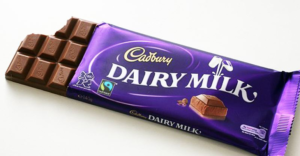THE CADBURY CASE
The UK’s Court of Appeal recently rejected the trademark alteration application filed by Cadbury, where it claimed larger protection over the purple hue. The altered specification pleaded for stated – “ applied to the whole visible surface, or being the predominant colour.” It sought to remove the latter part of the original specification stating –“applied to the whole visible surface of the packaging.”
As reported, Cadbury has previously faced various objections from other brands due to its monopoly over a colour and has successfully restrained others from using the same. Trying to extend this protection, Cadbury wanted to remove the “whole surface” attachment after “predominant colour” claiming problems of interpretation, in order to extend its protection against any mark with a prominent purple hue present, irrespective of it being on the whole surface or not.
The court presided by Justice Floyd, rejected this alteration claim stating that alteration can only be done in very limited circumstances. Further, he went on to conclude that, removing the “whole surface” part of the specification, would further expand the protection of Cadbury to a large unreasonable extent, which was not primarily expressed while seeking registration.
Protection ought to be given only to the extent monopoly is sought in the first place and with regard to the distinctiveness achieved. Justice Floyd stated that if merely “predominant colour” is written, it could cover purple in extravagantly different ways like in the form of stripes, spots etc, rather than the whole visible surface. Protection can only be granted to the way it has actually been used by the claimant and not for other extravagant uses, which are sufficiently distinct.
As this case deals with monopolising colour and the intricacies around it in Trademark law, hence a discussion around the status of such a monopoly in India is imperative to be discussed.
INDIAN JURISPRUDENCE WITH RESPECT TO MONOPOLISING COLOUR UNDER TRADEMARK LAW
Can a colour/ colour combination be monopolised as a distinct one? In the case of passing off suits, this question was answered by the honourable Delhi HC in the case of Britannia Industries Ltd. Vs. ITC Ltd. In this case, the major issue in contention was whether the yellow-blue combination used by ITC Ltd. for its sugar free farmlite biscuits was exclusive to them and no one could use any resembling combination or such a combination in the biscuit industry. The main point to answer here was if the colour combination is distinct enough to claim its monopoly over it. Britannia Industries contended that the colour blue was used in a variety of sugar-less products. The court said that there was no prima facie evidence to establish that the combination of yellow and blue in the biscuit industry was easily associated with the product of ITC Ltd. ITC had not established that the get-up in the form of the yellow-blue combination employed by it had become so distinctive of its products that whenever any person saw the yellow-blue combination on a package of digestive biscuits, he would associate it with ITC. The court principally held that “The appropriation of and exclusivity claimed vis-à-vis a get-up and particularly a colour combination stands on a different footing from a trade mark or a trade name because colours and colour combinations are not inherently distinctive. It should, therefore, not be easy for a person to claim exclusivity over a colour combination particularly when the same has been in use only for a short while. It is only when it is established, may be even prima facie, that the colour combination has become distinctive of a person’s product that an order may be made in his favour.” Hence in this case stress was put up on the aspect of longevity and close association to the product for the purpose of proving a distinctive identity of a particular colour combination. An establishment of exclusive association needs to be done for such protection.
The next question when dealing with monopoly in colour combinations is the question of exhaustion of colours and using different shades of colours as assorted colours can be derived from one particular colour that being the primary colour. This question was taken up in the case of N. Ranga Rao And Sons vs Anil Garg And Ors., where the court referred to the case of Campbell Soup Co. v. Armor & Co. In this case, there was a conflict as to the usage of red and white by other firms in packaging their food products and hence Campbell filed a suit against armour for the same. It was established that the Campbell red and the carnation red weren’t similar, and armour used different shades of red in its labels. The court held that “If they may thus monopolize red in all of its shades the next manufacturer may monopolize orange in all its shades and the next yellow in the same way. Obviously, the list of colours will soon run out….”. It was established that to prove a distinctive identity of the colour, seeking protection, the colour combination with its blend of some distinctive design needed to be established. It was said by the court that, “The distinctiveness of plaintiff’s packages does not depend upon colour alone, although each has been granted registration of a trade mark described in terms of colour. Each has its name in one of the colour bands in a uniform and specified type of script. Each has a very distinctive design on its label.” Hence it was established that monopolising a colour without any other distinct features distinguishing it from other products using a similar shade or a similar colour pattern could not take place and some specific and unique designed features need to be established to claim protection and to fulfil the criterion of distinctiveness. McCarthy on Trademarks talks about this distinctiveness based on colour and it can be observed at para 7.44 that “a single colour can never be classified as inherently distinctive and will always require proof of secondary meaning for protection and registration.”
In the case of Christian Louboutin v. Abu Baker, it was similarly held that a single colour cannot be granted trademark status. An exclusive claim over a single colour was denied, ruling out creation of such a monopoly. However, in the more recent case of Christian Louboutin SAS v. Ashish Bansal, the court unmindful of the legal precedents and the provision providing a monopoly merely to a “distinct combination of colours”, took a contradictory stand, ruling for an acquired distinctiveness in the RED SOLES on shoes, granting the plaintiff an exclusive monopoly. This was on recognition of usage of a specific tone of red . This brings in uncertainty in the Trademark regime, but the correct mindful rationale in my opinion is the one emphasized earlier in the case of Campbell – single colours are generic and should not be trademarkable with respect to any product, as otherwise slowly all colours and their tones will run out!
Image source: Here


















